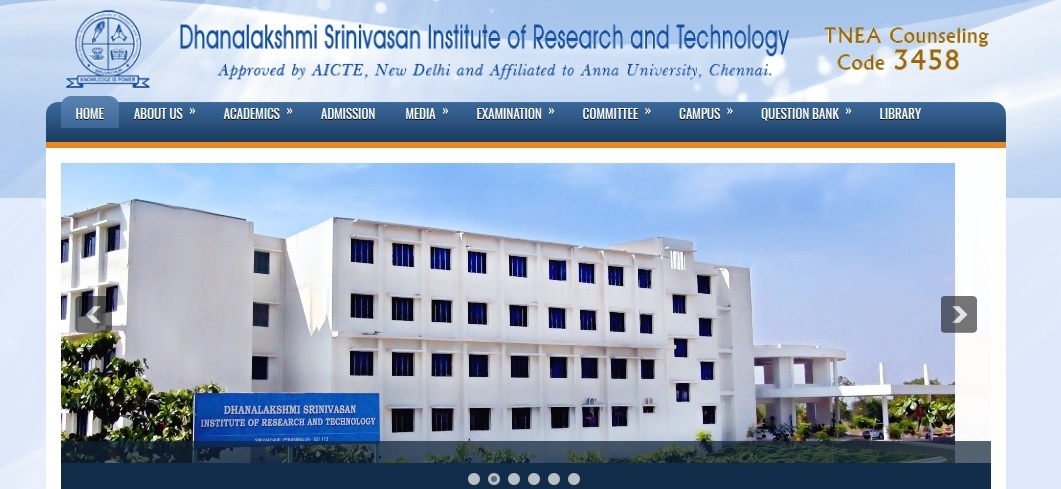CS6302 Database Management Systems B.E Question Bank : dsirt.ac.in
Name of the Institute : Dhanalakshmi Srinivasan Institute of Research and Technology
University : Anna University
Degree : B.E
Department : Computer Science & Engineering
Subject Code/Name : CS6302 Database Management Systems
Year : 2nd
Semester : 3rd
Document Type : Question Bank
Website : dsirt.ac.in
Download Model/Sample Question Paper :
Part-A : https://www.pdfquestion.in/uploads/ds…BMS-PART-A.pdf
Part-B : https://www.pdfquestion.in/uploads/ds…with-hints.pdf
DSIRT Database Management Systems Question Paper
Unit : 1- Introduction:
1. Who is a DBA? : What are the responsibilities of a DBA?:
A database administrator (short form DBA) is a person responsible for the design, implementation, maintenance and repair of an organization’s database. They are also known by the titles Database Coordinator or Database Programmer, and is closely related to the Database Analyst, Database Modeller, Programmer Analyst, and Systems Manager.
Related : DSIRT GE6351 Environmental Science & Engineering B.E Question Bank : www.pdfquestion.in/3180.html
The role includes the development and design of database strategies, monitoring and improving database performance and capacity, and planning for future expansion requirements. They may also plan, co-ordinate and implement security measures to safeguard the database
2. What is a data model? : List the types of data model used:
A database model is the theoretical foundation of a database and fundamentally determines in which manner data can be stored, organized, and manipulated in a database system. It thereby defines the infrastructure offered by a particular database system. The most popular example of a database model is the relational model.

Types of data model used
** Hierarchical model
** Network model
** Relational model
** Entity-relationship
** Object-relational model
** Object model
3. Define database management system? :
Database management system (DBMS) is a collection of interrelated data and a set of programs to access those data.
4. List any eight applications of DBMS :
a) Banking
b) Airlines
c) Universities
d) Credit card transactions
e) Tele communication
f) Finance
g) Sales
h) Manufacturing
i) Human resources
5. What are the disadvantages of file processing system? :
The disadvantages of file processing systems are
a) Data redundancy and inconsistency
b) Difficulty in accessing data
c) Data isolation
d) Integrity problems
e) Atomicity problems
f) Concurrent access anomalies
6. What are the advantages of using a DBMS? :
The advantages of using a DBMS are
a) Controlling redundancy
b) Restricting unauthorized access
c) Providing multiple user interfaces
d) Enforcing integrity constraints.
e) Providing backup and recovery
7. Give the levels of data abstraction? :
a) Physical level
b) Logical level
c) View level
8. Define instance and schema? :
Instance :
Collection of data stored in the data base at a particular moment is called an Instance of the database.
Schema :
The overall design of the data base is called the data base schema.
9. Define the terms :
1) Physical schema
2) logical schema.
Physical schema :
The physical schema describes the database design at the physical level, which is the lowest level of abstraction describing how the data are actually stored.
Logical schema :
The logical schema describes the database design at the logical level, which describes what data are stored in the database and what relationship exists among the data.
10. Mention the actors on scene :
** Database administrator
** Database designer
** End users
11. What is conceptual schema? :
The schemas at the view level are called subschema? :s that describe different views of the database.
12. Define data model? :
A data model is a collection of conceptual tools for describing data, data relationships, data semantics and consistency constraints.
13. What is storage manager? :
A storage manager is a program module that provides the interface between the low level data stored in a database and the application programs and queries submitted to the system.
14. What are the components of storage manager? :
The storage manager components include
a) Authorization and integrity manager
b) Transaction manager
c) File manager
d) Buffer manager
15. What is the purpose of storage manager? :
The storage manager is responsible for the following
a) Interaction with the file manager
b) Translation of DML commands in to low level file system commands
c) Storing, retrieving and updating data in the database
16. List the data structures implemented by the storage manager :
The storage manager implements the following data structure
a) Data files
b) Data dictionary
c) Indices
17. What is a data dictionary? :
A data dictionary is a data structure which stores meta data about the structure of the database ie. the schema of the database.
18. What is an entity relationship model? :
The entity relationship model is a collection of basic objects called entities and relationship among those objects. An entity is a thing or object in the real world that is distinguishable from other objects.
19. What are attributes? : Give examples:
An entity is represented by a set of attributes. Attributes are descriptive properties possessed by each member of an entity set.
Example : possible attributes of customer entity are customer name, customer id, Customer Street, customer city.
20. What is relationship? : Give examples:
A relationship is an association among several entities.
Example : A depositor relationship associates a customer with each account that he/she has.